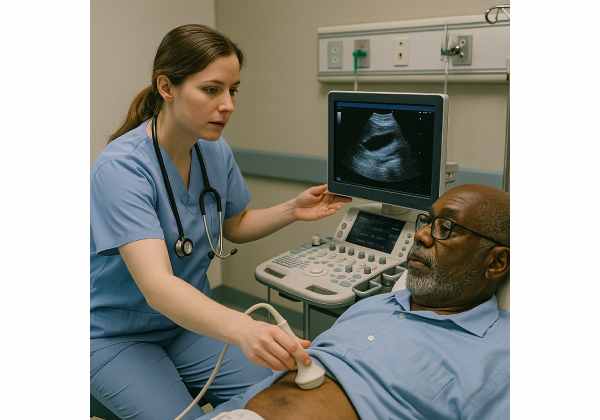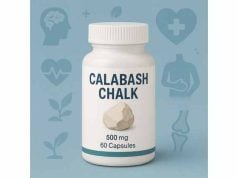
Abdominal aortic dissection is a rare but life-threatening condition involving a tear in the inner wall of the abdominal aorta, the largest artery in the abdomen. Blood surges through this tear, creating a false channel within the aortic wall and potentially compromising blood flow to organs or causing fatal rupture. Prompt recognition, diagnosis, and urgent intervention are essential to improving survival and reducing complications. This comprehensive guide explores abdominal aortic dissection from causes and risk factors to diagnosis, symptoms, evidence-based treatment, and prevention.
Table of Contents
- Comprehensive Overview of Abdominal Aortic Dissection
- Exploring Causes and Underlying Risk Factors
- Recognizing Symptoms and Diagnostic Pathways
- Modern Management and Treatment Strategies
- Frequently Asked Questions
Comprehensive Overview of Abdominal Aortic Dissection
Abdominal aortic dissection is a vascular emergency caused by a tear in the intimal (inner) layer of the abdominal aorta, resulting in separation of the aortic wall’s layers. As blood flows between these layers, a “false lumen” develops, threatening to cut off blood supply to the abdominal organs and legs or to rupture the vessel entirely. While dissections most commonly occur in the thoracic (chest) aorta, isolated abdominal aortic dissections, though less frequent, carry equally grave risks.
Key facts about abdominal aortic dissection:
- Definition: A separation of the layers within the aortic wall in the abdominal region, forming a false channel for blood flow.
- Types: Dissections may be classified as “primary abdominal” or as an extension from a thoracic aortic dissection.
- Rarity: Less common than thoracic dissection or abdominal aortic aneurysm, but just as urgent when it occurs.
Why is this condition so dangerous?
The false lumen created by the dissection can rapidly expand, block vital branch arteries, or rupture, resulting in fatal internal bleeding. It may present suddenly, often mimicking other abdominal or vascular conditions, which can delay diagnosis and treatment.
Impact and outcomes:
Without rapid intervention, mortality rates are extremely high. Early diagnosis, blood pressure control, and surgery or endovascular repair can save lives, underscoring the importance of awareness for both patients and clinicians.
Exploring Causes and Underlying Risk Factors
The abdominal aortic dissection is a multifactorial process involving weakening and tearing of the aortic wall, most often in people with pre-existing vessel disease or genetic predisposition.
Primary Causes of Abdominal Aortic Dissection
- Chronic High Blood Pressure (Hypertension):
Persistent elevation of blood pressure is the leading cause of aortic wall injury and intimal tears, triggering most aortic dissections. - Atherosclerosis:
Progressive hardening and thickening of the aortic wall due to plaque buildup weakens vessel integrity and increases susceptibility to dissection. - Connective Tissue Disorders:
Genetic conditions such as Marfan syndrome, Ehlers-Danlos syndrome, and Loeys-Dietz syndrome make the aortic wall fragile and prone to tearing, even in younger individuals. - Abdominal Aortic Aneurysm:
An existing aneurysm (enlarged or weakened aorta) increases the likelihood of dissection by stretching the vessel wall. - Trauma:
Direct injury to the abdomen, such as from car accidents or severe falls, can cause or precipitate aortic dissection. - Iatrogenic Causes:
Rarely, medical procedures such as catheterizations or vascular surgery can inadvertently cause aortic injury and dissection. - Other Medical Conditions:
Inflammatory diseases (vasculitis), infections, or congenital abnormalities can rarely contribute.
Risk Factors for Abdominal Aortic Dissection
- Uncontrolled hypertension
- Male sex (higher risk)
- Age (incidence increases after 60)
- Smoking and tobacco use
- Family history of aortic disease
- Known connective tissue or genetic syndromes
- Aortic valve or vascular malformations
- History of aortic aneurysm or previous dissection
- Substance abuse (notably stimulants like cocaine or amphetamines)
Potential Consequences
- Compromised blood flow to abdominal organs:
May cause ischemia to the intestines, kidneys, or legs. - Rupture of the aorta:
Catastrophic internal bleeding with extremely high mortality. - Aneurysm formation:
A false lumen may become aneurysmal and at risk for later rupture.
Preventive tips for high-risk individuals:
- Monitor and aggressively control blood pressure.
- Avoid smoking and tobacco products.
- Seek medical advice for unexplained abdominal or back pain.
- Screen for aortic disease if you have a family or personal history.
Recognizing Symptoms and Diagnostic Pathways
Abdominal aortic dissection can be challenging to diagnose because its symptoms often resemble other, less serious conditions. Rapid recognition and prompt action are essential to survival.
Typical Symptoms of Abdominal Aortic Dissection
- Sudden, severe abdominal pain:
Often described as tearing, ripping, or stabbing, pain may radiate to the back or lower limbs. - Flank or back pain:
Frequently accompanies abdominal pain and may be mistaken for kidney stones or muscle strain. - Pulse deficits:
Weakened or absent pulses in the legs or feet, or differences between the right and left sides. - Signs of limb ischemia:
Pain, numbness, coldness, or paralysis of one or both legs. - Nausea and vomiting:
Occurs in some cases due to intestinal ischemia. - Shock symptoms:
Sweating, low blood pressure, rapid heart rate, confusion, fainting, or collapse (especially if rupture occurs). - Blood in stool or urine:
If dissection compromises intestinal or renal blood flow.
When to Seek Emergency Help
Any combination of the above—especially sudden severe pain and shock—warrants immediate medical attention. Delay increases the risk of death.
How Abdominal Aortic Dissection Is Diagnosed
1. Clinical evaluation:
A careful history and physical exam, with focus on pain onset, quality, associated symptoms, blood pressure, and pulses.
2. Imaging studies:
- CT Angiography (CTA):
The most common and rapid method; visualizes the dissection, location, extent, and any organ involvement. - Magnetic Resonance Angiography (MRA):
Useful alternative, especially in those with contrast allergies or kidney problems. - Ultrasound (including bedside aortic scanning):
Can quickly identify dissection or aneurysm in unstable patients but may miss subtle or complex cases. - Transesophageal Echocardiography (TEE):
More often used for thoracic dissection, but can visualize the upper abdominal aorta.
3. Laboratory tests:
Help rule out other causes, assess for organ injury, and monitor blood loss or clotting problems.
Differential diagnosis
Abdominal aortic dissection may mimic or be confused with:
- Abdominal aortic aneurysm rupture
- Mesenteric ischemia or infarction
- Renal colic
- Pancreatitis
- Gastrointestinal bleeding
- Acute myocardial infarction
Practical tips for patients:
- Report new, severe abdominal or back pain to a healthcare professional urgently.
- If you have a history of aortic disease, carry an emergency alert card or medical bracelet.
- Do not attempt to drive yourself if you suspect dissection—call emergency services.
Modern Management and Treatment Strategies
Management of abdominal aortic dissection is an urgent and complex process. The goal is to prevent rupture, restore blood flow to vital organs, control symptoms, and treat underlying causes.
Initial Emergency Management
- Hospitalization in an intensive care or emergency setting
- Blood pressure control:
Rapid lowering of blood pressure and heart rate with IV medications (beta-blockers, vasodilators) to minimize aortic wall stress. - Pain management:
Strong pain relievers (often IV narcotics) to reduce distress and sympathetic drive. - Continuous monitoring:
Cardiac monitoring, frequent vital sign checks, and preparation for rapid intervention.
Definitive Treatment Options
1. Endovascular Repair (EVAR):
- Stent-graft placement:
A minimally invasive procedure in which a stent-graft is inserted via the femoral artery and deployed inside the dissected aorta, sealing the false lumen and restoring normal flow. - Advantages:
Lower short-term risk, quicker recovery, and effective for many abdominal dissections if anatomy is suitable.
2. Open Surgical Repair:
- Aortic replacement:
The damaged segment is removed and replaced with a synthetic graft. - Indications:
Rupture, complicated dissections, or unsuitable anatomy for stenting.
3. Supportive Care for Uncomplicated Cases:
- Some stable, limited dissections without organ involvement may be managed medically, with strict blood pressure control, close imaging, and readiness to intervene if the dissection progresses.
Complications and Their Management
- Rupture:
Requires emergency surgery—high mortality risk. - Organ ischemia:
If bowel, kidney, or spinal cord blood supply is compromised, additional procedures or bypass may be needed. - Aneurysm development:
Ongoing imaging surveillance to detect secondary aneurysm formation.
Long-Term Follow-Up and Prevention
- Blood pressure monitoring and medication adherence
- Regular imaging (CT or ultrasound) to check for changes
- Smoking cessation and lifestyle modification
- Family screening if hereditary aortic disease is suspected
- Education on recognizing symptoms of recurrence
Patient and Caregiver Advice
- Carry information about your aortic condition and repair, if applicable.
- Avoid strenuous activity or heavy lifting unless cleared by your physician.
- Attend all follow-up appointments and stay current with prescribed medications.
- Seek prompt care for new or unexplained abdominal or back pain.
Frequently Asked Questions
What is abdominal aortic dissection and how does it occur?
Abdominal aortic dissection is a tear in the inner lining of the abdominal aorta, allowing blood to split the wall and form a false channel. It usually results from high blood pressure, atherosclerosis, or connective tissue disease.
Who is most at risk for abdominal aortic dissection?
People over 60, men, those with uncontrolled hypertension, aortic aneurysm, smoking history, or inherited connective tissue disorders are at highest risk.
What are the warning signs of abdominal aortic dissection?
Sudden, severe abdominal or back pain, possibly with fainting, pulse loss in the legs, or signs of shock, are key warning signs. Immediate emergency care is vital.
How is abdominal aortic dissection diagnosed?
Diagnosis relies on imaging such as CT angiography, ultrasound, or MRI to visualize the tear, its extent, and its effects on organs and blood flow.
What treatments are available for abdominal aortic dissection?
Treatment includes rapid blood pressure control, pain management, and definitive repair by endovascular stenting or open surgery, depending on severity and anatomy.
Is abdominal aortic dissection fatal?
Without rapid diagnosis and treatment, abdominal aortic dissection is often fatal, especially if the aorta ruptures. Early intervention greatly improves survival.
Can abdominal aortic dissection be prevented?
Reducing risk factors—controlling blood pressure, quitting smoking, regular checkups, and genetic counseling for at-risk families—can lower the risk.
How should survivors of abdominal aortic dissection manage their health?
Long-term follow-up with imaging, blood pressure management, medication, lifestyle changes, and awareness of symptoms are essential for survivors.
Disclaimer:
The information in this article is intended for educational purposes only and is not a substitute for professional medical advice, diagnosis, or treatment. Always seek advice from your physician or qualified health provider regarding abdominal aortic dissection or any medical condition.
If you found this article useful, please share it on Facebook, X (formerly Twitter), or your favorite social media. Your support helps us continue providing high-quality health information. Follow us for updates, and thank you for helping us reach more people in need.








